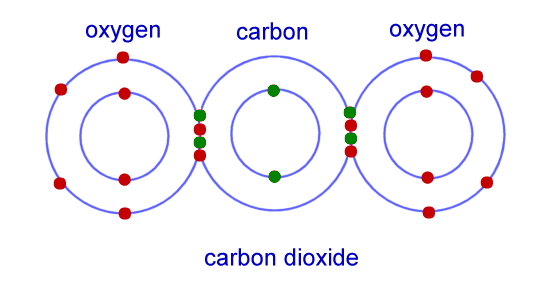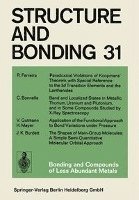Chemical Bonding In Solids Burdett Pdf
Chemistry 253
- Chemical Bonding In Solids Burdett Pdf Printable
- Chemical Bonding In Solids Burdett Pdf Free
- Chemical Bonding In Solids Burdett Pdf Answer
MaterialsChemistry
UNESCO – EOLSS SAMPLE CHAPTERS MATERIALS SCIENCE AND ENGINEERING – Vol. I – Bonding in Solids, Structural and Chemical Properties - R. Grimes ©Encyclopedia of Life Support Systems (EOLSS) fluorine (n = 9) is a dimolecular gas (F2), neon (n = 10) is a monatomic inert gas but sodium (n = 11) is a soft metallic solid.Clearly if we are to understand bonding in. Chemical bonds: a dialog by jeremy k burdett, j k Chemical Bonds: A Dialog by Jeremy K Burdett, Inorganic Chemistry This series reflects the breadth of modern Chemical Bonding in Solids. By Jeremy K PDF The Great American Songbook: E-Z Play Today Volume 282.pdf Chemical bonding in solids: amazon.it: jeremy k. 5.1 What is a Chemical Bond When two atoms of same or different elements approach each other, the energy of the combination of the atoms becomes less than the sum of the energies of the two separate atoms at a large distance. We say that the two atoms have combined or a bond is formed between the two. The bond is called a chemical bond. Chemical Bonding in Solids, Jeremy K. Burdett, 1995, Science, 319 pages. Chemical Bonding in Solids examines how atoms in solids are bound together and how this determines the structure and properties of materials. Over the years, diverse concepts. Solid state chemistry, Lewis Edward John Roberts, 1975, Science, 264 pages.
Spring 2016
Instructor:
Professor Peidong Yang,
239 Hild.,Tel: 643-1545
Email: p_yang@berkeley.edu
Office Hours:Friday10-12pm, 239 Hild.

Nick Kornienko
nick.kornienko.berkeley@gmail.com
Description:
This course is intendedprimarily as an introduction course to materials and solid state chemistry forgraduate students and advanced undergraduate students. The objective is tounderstand solids from a chemical perspective and introduce general solid statesynthesis methodologies and characterization techniques. Topics covered willinclude: structure and structure determination of crystalline solids; freeelectron model for metals; electronic band structure; chemical bonding insolids; structure-property relationships.
Grading:
Problem sets (2)40%
Final60%
Main Reference Books: (Reservedat Chem./Phys./Engineering Lib.)
West: Solid State Chemistry and its Applications (Wiley,1988)
Chemical Bonding In Solids Burdett Pdf Printable

West: Basic solid state chemistry (Wiley, 1999).
Gersten and Smith: The Physics andChemistry of Materials (Wiley, 2001)
Hoffmann: Solids and Surfaces (VCH, 1988)

Burdett: Chemical Bonding in Solids (Oxford 1995)

Ashcroft and Mermin: Solid StatePhysics (Saunders College, latest edition)
Kittel: Introduction to solid State Physics (Wiley, 1996)
William D. Callister Jr. Materials Science and Engineering,an Introduction (Wiley)
Cheetham and Day: Solid StateChemistry: Techniques (Oxford, 1987)
Cheetham and Day: Solid StateChemistry: Compounds (Oxford, 1992)
Cox: The Electronic Structure and Chemistry of Solids(Oxford, 1987)
Wells: Structural Inorganic Chemistry (Clarendon Press,1984)
Wold and Dwight: Solid StateChemistry (Chapman Hall, 1993)
Courtesy ofDr. S. Heyes,Univ. Oxford, for crystal structural models in the Lectures.
Hereis a tentative list of the lecture topics.
Date
Materials Chemistry I
1 | ||
2 | Ashcroft: 4-7 | |
3 | Ashcroft: 4-7 Dreambox ncf repair tool sim2 edition v2. | |
4 | Homework#01-Due March 10th | West: 5 |
5 | West: 7,8 | |
6 | Homework#02 – Due March 17th | |
7 | West: 11, 12 | |
8 | Callister 9 | |
9 | Phase Diagram | |
10 | Final |
Materials Chemistry II
11 | Ashcroft/Mermin: 1-3, 8-10 Kittel: 6-9 |
12 | Nearly free electron model, Fermi surface, |
13 | Fermi’s Golden Rule, Optical Transition |
14 | Gersten, 7,11 |
15 | Hoffmann,Burdett 1-3 |
16 | |
17 | |
18 | Tight Binding Model |
Materials Chemistry III
Chemical Bonding In Solids Burdett Pdf Free
Chemical bonding, any of the interactions that account for the association of into, and other stable species that make up the familiar substances of the everyday world. When atoms approach one another, their nuclei and interact and tend to distribute themselves in space in such a way that the total is lower than it would be in any arrangement. If the total energy of a group of atoms is lower than the sum of the energies of the component atoms, they then bond together and the energy lowering is the bonding energy. Get exclusive access to content from our 1768 First Edition with your subscription.This article begins by describing the historical evolution of the current understanding of chemical bonding and then discusses how modern theories of the formation of chemical bonds have emerged and developed into a powerful description of the structure of matter. After the historical introduction, qualitative models of bonding are discussed, with particular attention given to the formation of ionic and covalent bonds and the correlation of the latter with molecular shapes. The more-sophisticated quantum mechanical approaches to bond formation are then described, followed by a survey of a number of special cases that raise interesting problems or lead to important insights.For a detailed discussion of the structure and properties of atoms, see. Chemical compounds are surveyed in the article, and the elements are described in the article.
Chemical Bonding in Solids, Jeremy K. Burdett, 1995, Science, 319 pages. Chemical Bonding in Solids examines how atoms in solids are bound together and how this determines the structure and properties of materials. Over the years, diverse concepts. Solid state chemistry, Lewis Edward John Roberts, 1975, Science, 264 pages. Chemical bonding is traditionally discussed in terms of the covalent. Of covalent inter- actions.16 Electron delocalization in aperiodic solids is of. Albright, Jeremy K. Burdett, and Myung. Hwan Whangbo.
Historical review Emergence of quantitative chemistryThe early Greeks, most notably, argued that is composed of fundamental particles called. Mitsumi usb floppy driver for mac. The views of the, however, lacked the authority that comes from experiment, and evidence of the existence of atoms was not forthcoming for two millennia until the emergence of quantitative, in the 18th century.
Inorganic Chemistry This series reflects the breadth of modern research in inorganic chemistry and fulfils the need for advanced texts. The series covers the whole range of inorganic and physical chemistry, solid state chemistry, coordination chemistry, main group chemistry and bioinorganic chemistry. Chemical Bonds A Dialog Jeremy K. Burdett The University of Chicago, USA Understanding the nature of the chemical bond is the key to understanding all chemistry, be it inorganic, physical, organic or biochemistry. In the form of a question and answer tutorial the fundamental concepts of chemical bonding are explored. These range from the nature of the chemical bond, via the regular hexagonal structure of benzene and the meaning of the term 'metallic bond', to d-orbital involvement in hypervalent compounds and the structure of N2O.
Chemical Bonding In Solids Burdett Pdf Answer
Chemical Bonds: A Dialog provides. a novel format in terms of a dialog between two scientists. insights into many key questions concerning chemical bonds. an orbital approach to quantum chemistry.